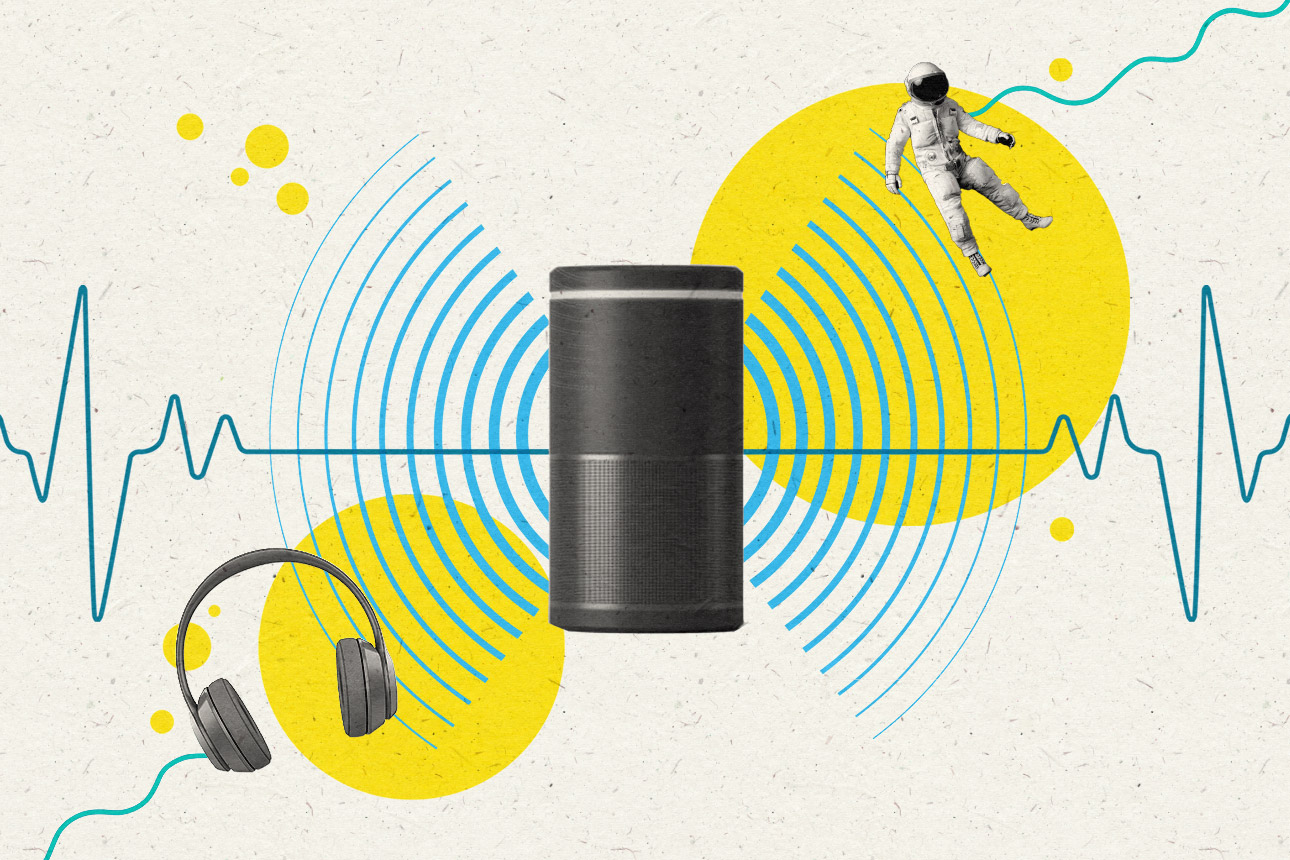Sound Business: The Promise of Audio Machine Learning Technologies
New machine learning technologies offer potential value creation through sound detection, analysis, and creation.

Carolyn Geason-Beissel/MIT SMR | Getty Images
Sounds are everywhere — the chatter and babble of humans and animals, the whirring and thrumming of machines, the background hum of the natural environment, and the murmur of bees on a summer day. These sounds provide crucial input to our decision-making, whether as pedestrians crossing the road or as engineers testing the safety of a vehicle or machine.
But until recently, the systematic analysis of sounds in dynamic situations — a busy train station, a shopping mall, or an urban park, for example — has been difficult due to the sheer number of complex acoustic signals interacting at once. But this is now changing, thanks to major advances in sensor technology and deep learning algorithms that can harvest enormous quantities of acoustic input and rapidly extract key information.
Get Updates on Leading With AI and Data
Get monthly insights on how artificial intelligence impacts your organization and what it means for your company and customers.
Please enter a valid email address
Thank you for signing up
Two branches of sound-related machine learning are emerging: one focused on the detection and analysis of sounds and the other on the AI-powered creation of sounds. Both have significant potential for business and societal value creation. In fact, according to one estimate, the global market for AI audio-recognition technologies is set to more than triple, from $4.1 billion in 2021 to $14.1 billion by 2030.
Deep learning algorithms are now being used to pioneer innovations across a diverse range of industries and sectors, such as these applications of sound detection and analysis:
Commercial and household security. Every year, U.S. businesses and consumers spend billions of dollars protecting buildings and other physical assets. Smart home devices, such as Amazon’s Echo, already use AI-driven voice recognition technology to authenticate different users and provide personalized entertainment and shopping experiences. But now AI systems’ sensors and deep learning algorithms can analyze nonvoice ambient sounds from every part of an office, a factory, or a military facility, distinguishing between innocuous sounds and those that may indicate an emerging threat, such as breaking glass.
Deep learning algorithms are now being used to pioneer innovations across a diverse range of industries and sectors.
Health care. AI sound technologies could transform many areas of health care, particularly by enabling low-cost, rapid diagnoses of diseases in their early stages. In health care, they could be used to provide real-time measurements for an array of biometric data, such as heart rate, blood pressure, respiration rate, and stress level.
